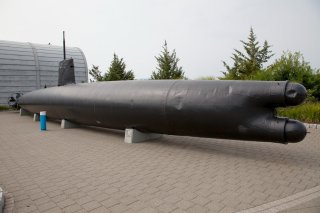Before Japan’s Air Force Attacked Pearl Harbor, Tokyo Sent in Its Midget Submarines
Midget submarines were meant to play a big role.
It is more likely Ha-16 launched the torpedoes at another vessel. At 10:04 A.M., the light cruiser USS St. Louis reported it had taken fire from submarine, but both torpedoes missed.
In the end, the air attack accomplished what the midget submarines could not. Japan’s naval aviators sank three U.S. battleships, crippling another five, blasted 188 U.S. warplanes — most sitting on the ground — and killed 2,403 American service members.
Unfortunately for officials in Tokyo, the Japanese Navy had struck a powerful blow, but not a crippling one. The bombardment failed to hit the repair facilities and fuel depots, which allowed the U.S. Pacific fleet to get back on its feet relatively quickly.
Just as importantly, not a single U.S. aircraft carrier was in Pearl Harbor at the time. The flattops would swiftly prove their dominance over battleships in the coming Pacific War.
Despite the debacle, the Japanese Navy continued sending Kō-hyōteki into combat. As at Pearl Harbor, the submariners in their tiny ships had very limited successes in operations from Australia to Alaska to Madagascar.
This first appeared in WarIsBoring here.
This article first appeared last year and is being republished due to reader interest.
Image: Wikipedia.

